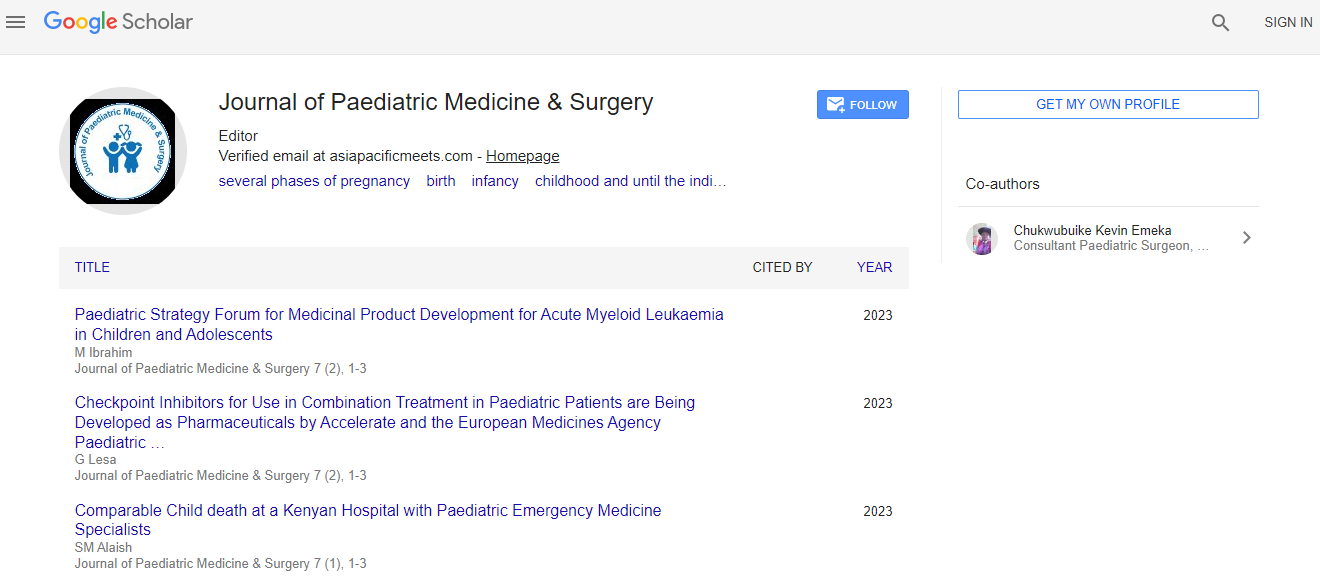Clinical Pediatrics and Pediatric Surgery 2017: Relationship of high altitude with congenital heart disease - Asif Hasan - Aligarh Muslim University
*Corresponding Author:
Copyright: © 2017 . This is an open-access article distributed under the terms of the Creative Commons Attribution License, which permits unrestricted use, distribution, and reproduction in any medium, provided the original author and source are credited.
Abstract
A published draft report on Site Assessment of Lead Pollution at an area of Kolkata (having lead smelters) on July 2006, stated high lead level in water, soil, solid waste and air particle. We conducted a health check-up camp for children of that area in 2015 and collected blood samples. In our hospital, we also got 2 sporadic cases that relate to lead toxicity with frank features of poisoning including lead lines in x-ray.
Aims & Objectives: To conduct a field study and also to evaluate blood lead level in youngsters residing in contaminated area of Kolkata and to look for effect of BLL on hepatological parameters. Materials & Methods: This was a cross sectional observational study on 50 children of age group 1-12 years, who attended the camp. High altitude typically denotes to promotions over 2000 m/6360 ft., but no single value is an adequate definition for all patients. Throughout the ascent to high altitude, barometer pressure declines exponentially, and in custody with Dalton's law, the partial pressure of oxygen falls accordingly. Air travel serves as a poor option to study the effect of hypoxemia on human physiology. One of the most natural is the systemic effects of high altitude on the natives and persons visiting hilly areas from low lands. The basis of the effects of high altitude comes from studies performed on aviators, mountaineers and natives of high lands.
More than 140 million people worldwide live at more than 2500m above the sea level and around 80 million live in Asia. High altitude stretches insight into the pathophysiology of both cyanotic and cyanotic heart disease in an interesting way. The patients with cyanotic CHD have more rounded hypoxic ventilator response, which develops as early as 7-8 years, while the most blunted ventilator response is seen in patients with extreme desaturation, which is corrected once the patient is surgically treated and normalized. Another significant difference between native highlander and patients with cyanotic heart disease is the fact that though both have arterial hypoxemia, highlanders have lowered alveolar oxygen tension while patients with cyanosis have normal oxygen tension.9 For patients with VSD, left to right shunting of blood decreases at high altitude. Patients with single ventricle physiology and postoperative Glenn and Fontan tolerate high altitude very poorly due to hypoxia and increased pulmonary vascular resistance.
Peripheral chemoreceptor afferent activity rises hyperbolically as hypoxia increases and there is a phenomenon of ventilatory acclimatization. Originally due to acute hypoxia, heart rate increases, along with myocardial contractility and cardiac output. Later on, cardiac output falls at rest and on exercise with decrease in left ventricular work but increase in right ventricular work and pulmonary pressures. Coronary circulatory flow increases along with progressive changes in right ventricular function, rising pulmonary pressures and chronic right ventricular pressure overload. Acclimatized person at high altitude develops hypoxic pulmonary vasoconstriction and rapid ascent can lead to subacute/chronic mountain sickness (Monge's disease) and high altitude pulmonary edema. This original article focuses on these aspects at physiological level and also in various cardiorespiratory diseases with special focus on congenital heart disease (CHD).
BLL was estimated by Atomic Absorption Spectroscopy (AAS) using graphite furnace atomic absorption spectrometer. Results: The median age of the population was 8 years with higher proportion of males (58%). Median BLL was 4.55 μg/dl and 24% (n=12) of these children had BLL above the CDC recommended cut off value of 5 μg/dl. However, none of the children had BLL >10 μg/dl or anemia (mean hemoglobin of 12.3 g% with normal RBC indices). This is expected as previous studies have clearly shown the association of lead and anemia is only at BLL >10μg/dl though hemoglobin level showed a negative linear dose-response relation with lead level using scatter plot. Although high altitude has a negative effect on preexisting respiratory diseases, we will focus on cardiovascular illnesses. High altitude has an adverse effect on the person from low altitude with rapid ascent and also on the person with underlying coronary artery disease, congestive heart failure, arrhythmias, systemic hypertension, and respiratory illness.
Conclusion: In our study even at known contaminated area, none had BLL exceeding the CDC intervention level. This may be due to lead free gasoline, a principle source of lead exposure, is not in use for more than 15 years. This indicates a positive impact of measures taken regarding lead poisoning. But both the sporadic cases were from households engaged in hazardous occupation at home settings, where children had direct daily exposure and these children are more vulnerable to poisoning. These ‘HOT SPOTS’ or ‘POCKETS’ are needed to be identified and further research is justified.

 Spanish
Spanish  Chinese
Chinese  Russian
Russian  German
German  French
French  Japanese
Japanese  Portuguese
Portuguese  Hindi
Hindi 